How To Create A Wiki Page For A Person
Article stats
-
Monthly traffic 1,361
-
Linking websites 95
-
Tweets 61
Data from Content Explorer
Shows how many different websites are linking to this piece of content. As a general rule, the more websites link to you, the higher you rank in Google.
Shows estimated monthly search traffic to this article according to Ahrefs data. The actual search traffic (as reported in Google Analytics) is usually 3-5 times bigger.
The number of times this article was shared on Twitter.
Having a Wikipedia page about yourself or your company is a milestone that improves your brand equity. And you don't even need to visit Wikipedia to see that. Google any notable brand, and you'll most likely see something like this: Most of the displayed information comes from Wikipedia and Wikidata. However, getting a Wikipedia page is tricky. And I'm putting it mildly. I spent hours researching the official guidelines, tried to reverse-engineer the process from the reviewers' point of view, and got our brand page approved without doing anything shady: And despite trying to make the page better gradually, it got flagged and deleted two weeks later. The problem? Allegedly bad sources and a bias against the SEO industry. Despite failing to get the page to stick and withstand the review processes, I learned a lot about Wikipedia and creating a brand page. In this guide, you'll learn how to create a Wikipedia page from start-to-finish, and how to stand the best chance of getting it approved long-term: Let's kick this off with the dealbreaker. The most common reason why Wikipedia pages fail the review process is the lack of notability. And here's the harsh reality: Your brand is less notable than you think. I had no doubt about the notability of Ahrefs. We have arguably the most popular SEO toolset and pretty much everyone in the industry has mentioned us at one point or another: What's your primary, paid SEO tool of choice these days? On top of this, our two biggest 'competitors' already have Wikipedia pages. So it should be pretty easy to get it for us as well, right? Well, here's the outcome of my first article submission: So, even for us, it took a lot of effort to put together enough good sources to stand a chance at withstanding the notability criteria. And you already know our results. Some editors thought that it was good enough, and some disregarded most of the sources as not reliable due to the affiliation with the marketing and SEO industry. So, how do you know what to use as sources? The notability criteria that apply to companies state that: An organization is generally considered notable if it has been the subject of significant coverage in reliable, independent secondary sources. Trivial or incidental coverage of a subject by secondary sources is not sufficient to establish notability. All content must be verifiable. If no independent, third-party, reliable sources can be found on a topic, then Wikipedia should not have an article on it. There are quite a few terms that need to be explained further. That's because even some well-established sources don't always meet the criteria. For example, I'm sure you've seen many brands with sections like this on their homepage, displaying the logos of well-known websites like Forbes and Entrepreneur: Sorry to disappoint, but these don't automatically establish notability on Wikipedia. A lot of pages on websites like these are user-generated and sponsored. That disqualifies them from being legitimate Wikipedia sources. Let me expand on the source criteria so it will be clear why: You see, because pretty much anyone can post on Forbes or Entrepreneur, they often fail the reliability and independence criteria unless their editorial teams create the content. Then there's the non-trivial mention criterion. We have links from prestigious sources, but most of them are just passing mentions like this: The Wikipedia consensus on a non-trivial mention seems to be at least two paragraphs dedicated to the topic of your page. The more, the better, and a whole dedicated article is the best. An example in our case is this: Make sure the first two of these are true, and ideally all three: This is the first and also last notability condition that has nothing to do with sources. Something run-of-the-mill can be defined as not standing out from the rest. This Wiki essay gives mostly local businesses as examples, but it can apparently be stretched quite a bit. Just check this comment on our deletion page discussion: The takeaway? Having the largest commercial crawler and developing a search engine is not enough to stand out for some editors. I wouldn't expect this kind of bias in other industries, but make sure that your company stands out in yours. There's no way you wouldn't know about brand mentions on the most prominent news sites like The New York Times, The Wall Street Journal, The Guardian, or Financial Times. If there's at least one article on those kinds of sites that mentions your brand in detail, you can most likely celebrate. It won't be probably difficult to find other legitimate sources to cite on your page. Another indicator of having a notable brand is its occurrence throughout Wikipedia itself. These mentions are often marked in red, meaning that there's no page for the brand yet. You can see an Ahrefs red link on a French page about backlinks: If you click on it, it takes you to an article creation page. That's because Wikipedia encourages contributors to create pages about "red links." Why? For Wikipedia to be the best encyclopedia it can be, it needs information on things that are mentioned throughout. If you're wondering how to find these red links, Google them. Just combine the search operator It naturally also retrieves citations of your articles, so you'll have to discard those. Unfortunately for us, it turned out that while we had quite a few red links, none of them were on the English Wiki. While the red link on the French article might have helped us establish notability on the French Wiki, it doesn't have much or any effect on the main English one. That's because Wikis in different languages are entities of their own (more on that later). Most of the time, you won't be lucky enough to have an all-star source or red links to begin. If that's the case, as it was for us, follow these tips in order. It's the most efficient method, and you can waste a lot of time looking for sources that may not even exist. Looking through your website's backlink profile is the most efficient way to find suitable sources. To do this, paste your website into Ahrefs' Site Explorer, then go to the Referring Domains report. This shows all the sites linking to you sorted roughly by popularity. Eyeball the list for popular news websites, magazines, and the best industry sources. When you encounter one, click the caret in the "Links to target" column to see individual links, then check their context. The source above looks promising because it provides information about our company. And there's a chance there will be at least two paragraphs about our brand and products. We can confirm whether that's the case by checking the page manually. With passing mentions and references, you can usually spot those right away. If you can't find at least one good source from your backlink profile, then you probably don't meet the notability guidelines and shouldn't continue. Instead, read this section about what to do in this situation. If your company is likely to have been referenced in books or journals, these may also be notable sources. As there are countless books on marketing and SEO, and our software is popular amongst industry professionals, this was the case for us. Unfortunately, as we don't own many of these books, we couldn't look for mentions firsthand. Instead, we used Google Books. If you're following along, just head to Google Books and search for your brand. It should return any books with mentions and show their context in the snippet. It's not much, but you can build your references and Wiki page text around it. Sidenote. I knew some books featuring our brand but were not available in Google Books. If that's the case for you, either get the book or try your luck with Amazon book samples. For journals, I'd recommend using the most trusted and popular journal directories. I used JSTOR during my university years, and it's recommended by Wikipedia as well. To be honest, I didn't find anything usable for Ahrefs on JSTOR. I had more luck with other journals, but after skimming through the contributions, they just weren't good marketing and SEO sources. I studied marketing as a part of my major, and it's a sad truth that many academic marketing pieces are far from reality. Take this into account for your industry. On top of that, some sources are also so-called predatory journals that don't meet the reliability and independence criteria. My opinion is that you're best sticking with JSTOR and not wasting time looking elsewhere. I'd recommend doing this only if you feel like you're missing just one more great source, as it involves searching the web for unlinked brand mentions. You can do this with Google search operators. Just plug in different news, magazines and industry blogs with your brand name: However, this is quite tedious and time-consuming, so let's streamline this process with the help of Ahrefs' Content Explorer. Content Explorer is a searchable database of more than three billion pages, where you can use similar search operators to filter the results. In our case, I want to see all mentions of "ahrefs" except those on our website. This returns over 250,000 results: Unfortunately, there's no way of filtering this down to websites that are good sources for Wikipedia, but we can narrow things down with filters to get a smaller sample to work with. First, let's select pages that are live and in English, as these are the only types of pages we can link to from Wikipedia. Second, let's filter for 'authoritative' websites. To do that, we can use Domain Rating (DR), which reflects the strength of a website's backlink profile. Suitable sources for Wiki tend to have pretty high DR, so I'll set this filter to DR 70+. Finally, let's toggle the "one page per domain" button and use the "highlight unlinked domains" feature to highlight results that don't link to us. Remember, we already went through referring domains, so we're only interested in sites that don't link to us now. To export those, we just hit "Export" and toggle the "Only pages with highlighted domains" box and get the data: This is how it looks in Google Sheets sorted by DR: We just filtered more than 250 thousand pages to only 174 domains. You can now easily skim through the Content Title and URL columns manually in search of potentially suitable Wikipedia sources. First of all, there's a high probability that you won't meet the criteria. If you gave it a shot and your submission got rejected, don't push unless you can improve the page and its sources. The number of rejected submissions is recorded, so you might regret it once you undoubtedly become a notable entity. I'm not here to tell you how to game the system. I spent a lot of time reading through the Wiki guidelines to ensure that everything I did was entirely above board. So don't give up on your notability. Here are two ways to improve it: Getting featured in major publications is one of the most challenging marketing tasks for businesses. Your options and opportunities heavily depend on your industry. It's usually a combination of the following: It's also worth noting that not all media coverage is made equal. Let's say that you created a great infographic with data that appeals to journalists. You might land references from desirable sources, but it will most likely be useless for creating your Wiki page. That's because the focus of the article will be on your content, not the company itself. I'd recommend consulting with PR professionals if you're serious about stepping up your PR game and don't know where to begin. This is a long-term play that's intertwined with brand strategy and management. Does your business have roots in a non-English speaking country? It will probably be covered more in local media than international. The principles of notability stay the same throughout Wikipedia, but the criteria depend on the locale. If you're a startup based in the Bay Area, you'll have a lot more work to do to become notable than a startup in Czechia, the country I'm from. And it makes sense. The quantity of reliable and independent sources is proportional to the number of speakers of that language. Solid coverage in two good sources would almost certainly be enough for a Czechia-based business, whereas it probably wouldn't for a US-based one. That wraps up the most complicated part of creating your Wiki page. It only gets easier from here. Wikipedia is an open collaboration project run by its community of contributors, editors, and admins. The only way you can become a trusted member of the community is to have an account associated with valuable edits and contributions. In short, signing up and creating a Wiki user page is necessary to be taken seriously. It's also needed to communicate with other members and disclose your conflict of interest (COI). You read that correctly. Creating or editing content in your own interest is discouraged for obvious reasons. And while submitting a draft of your company's page is not prohibited, you need to let editors know that you have a COI. And one of the places to do this is right on your user page: Just use one of the templates where you fill in the name of your employer. Please consider making an effort to improve Wikipedia regardless of your page. It's the right thing to do, and it will also increase your account reputation and your chances of getting COI edits approved. As you can see on my user page above, I listed topics that I'm keen on editing. I want to encourage you to do the same and contribute to a few articles before you submit your page for a review. The more unrelated your contributions are to your COI editing, the better. This shows other members that you're serious about Wikipedia and not just a single-purpose account. Building your reputation this way has another huge benefit. You'll also learn how to navigate Wikipedia's CMS, so when it comes to your page, you'll be ready. Forget about your usual process for creating outlines. You need to focus on the content of your Wikipedia page around your citation sources. That means not including anything you won't be able to cite later on. Remember that content based on three in-depth sources is usually better than content with 20 so-so sources. It helps ensure that the best ones aren't buried and overlooked by editors. I'd also recommend taking inspiration for structure from other companies in your space that already have a well-established page. Think about all the Wikipedia pages you've read up until now. They're not your typical articles or blog posts. There are five concepts that you should keep in mind when drafting your page: Don't take this lightly. Advertising is probably the second most common reason for rejections after lack of notability: The best plan of attack is to send your sources to an unbiased friend, let them write it, and publish it. If that's not an option, control your urges and write the best page for readers, not your company. I was well aware of this when drafting the Ahrefs page, yet some editors pointed out a few sections that weren't neutral in their minds. Sidenote. You can draft the post in Wiki's CMS right away, no need to do this elsewhere. Just go to your Sandbox, which you'll later use to copy-paste as the submission for review. If you've done your homework and established a reputation, you should already be pretty familiar with how the Wikipedia CMS works. I'll only highlight a few things here. First is the infobox template that's suitable for company profiles: You'll find this under Insert -> Template -> Infobox company: Next comes citing, which is made very easy. Wiki generates citations based on a URL or a book's ISBN. The system is not perfect, though. I've encountered some inaccuracies in the citation information. Make sure to double-check what Wiki generates and correct it where necessary. And lastly, it's nice to include categories to better connect your page with the rest of Wikipedia. While you can do it in the drafting stage, the category links should be disabled until the page gets approved. It's easier to add the categorization after that. You first need to turn on the option in Preferences -> Gadgets -> Editing -> HotCat: Then just use the categorization template at the end of your post by clicking here: Again, take inspiration by looking at the categories of related businesses. This is what I went for: The last thing I would recommend you do before submitting the article for review is to go through current discussions about Articles for Deletion (AfD). Check a few of those proposed AfD pages, arguments of the Wiki editors, and learn from that. Discussions about specific sources and why they can't be used to establish notability are especially useful. After you're done polishing the article, you're ready to go through the Article for Creation process. The AfC process tells you everything that you need to know and do, including disclosing your COI before you start. I went for the "I'm paid to edit" option as an Ahrefs employee: It's also recommended to disclose it after you're done with the page via comments… … and talk pages: The box that you see on the talk page above could make the review process faster. That's because it categorizes and highlights the draft for the most suitable editors. You can check the directory of WikiProjects and add it at the end of your talk page post. In my case, it was {{WikiProject Marketing & Advertising}}. The review could take anything between a few hours and a few weeks. My first submission actually got declined within a day or two: So what went wrong? I probably made the mistake of including too many sources where the Ahrefs mentions were rather trivial. While it's still valid to use these as references, they don't count towards your notability. As mentioned earlier, you shouldn't expect reviewers to click through all your references. I diluted the great sources with less significant ones. I would still include a few sources that wouldn't be considered significant. Their purpose is to support information that makes the page flow well and highlight some interesting facts. The second submission took way more time. I got a notification from one editor early on with an additional question about COI… … but they didn't continue the conversation. A few weeks later, someone else commented regarding our sources and a few parts that may not have been neutral. I thanked them, fixed the issues, and finally got the page approved after two months from the initial submission. No matter how good your submission is, there will always be room for improvement. Be prepared to engage with the editors on talk pages and in the comments. While the criteria for accepting submissions are subjective to a certain degree, don't try to argue. Yes, some of your competitors may have approved Wiki pages that are worse in every aspect, but that's not a valid argument for getting your page approved. Someone actually commented on our deletion page discussion in our favor, and one of the arguments was regarding other SEO software companies with approved Wiki pages: Well, that went sideways. The discussion on our page triggered AfD discussions for all SEO software companies with a Wiki page. Some industries just have it more difficult on Wikipedia. Your job isn't done even if your page gets approved and sticks. Some pages are more susceptible to attacks and bad editing than others. This is the price we have to pay for having open-collaboration projects. Make sure to monitor your page so you'll get notified if someone makes an edit. Just check the box when you submit an article or publish changes: That said, keep in mind that you should only revert or edit changes that are not verifiable. If someone adds something bad about your company that's supported by valid sources, leave it there. That's the part of keeping the pages neutral and objective. I wish you good editors. I had three goals with this guide: Of course, the best-case scenario would be to have such a popular and interesting brand that independent contributors would create the page for you. This will likely happen once you hit a certain level of notability. You might also be wondering about paid services that claim to get you your Wikipedia page. To me, the mere existence of these feels shady, so I haven't even reviewed them. I had one person reach out to me on social media, claiming to be an editor that would accept my submission. I ignored that, and you should ignore them too. As you already know, an approved submission can be easily deleted anyway and a sketchy approval would just give reviewers more ammunition. Everything you need to know about assessing your notability is above. Did I forget to mention anything? Do you have any questions or your own experience regarding branded Wikipedia pages? Ping me on Twitter.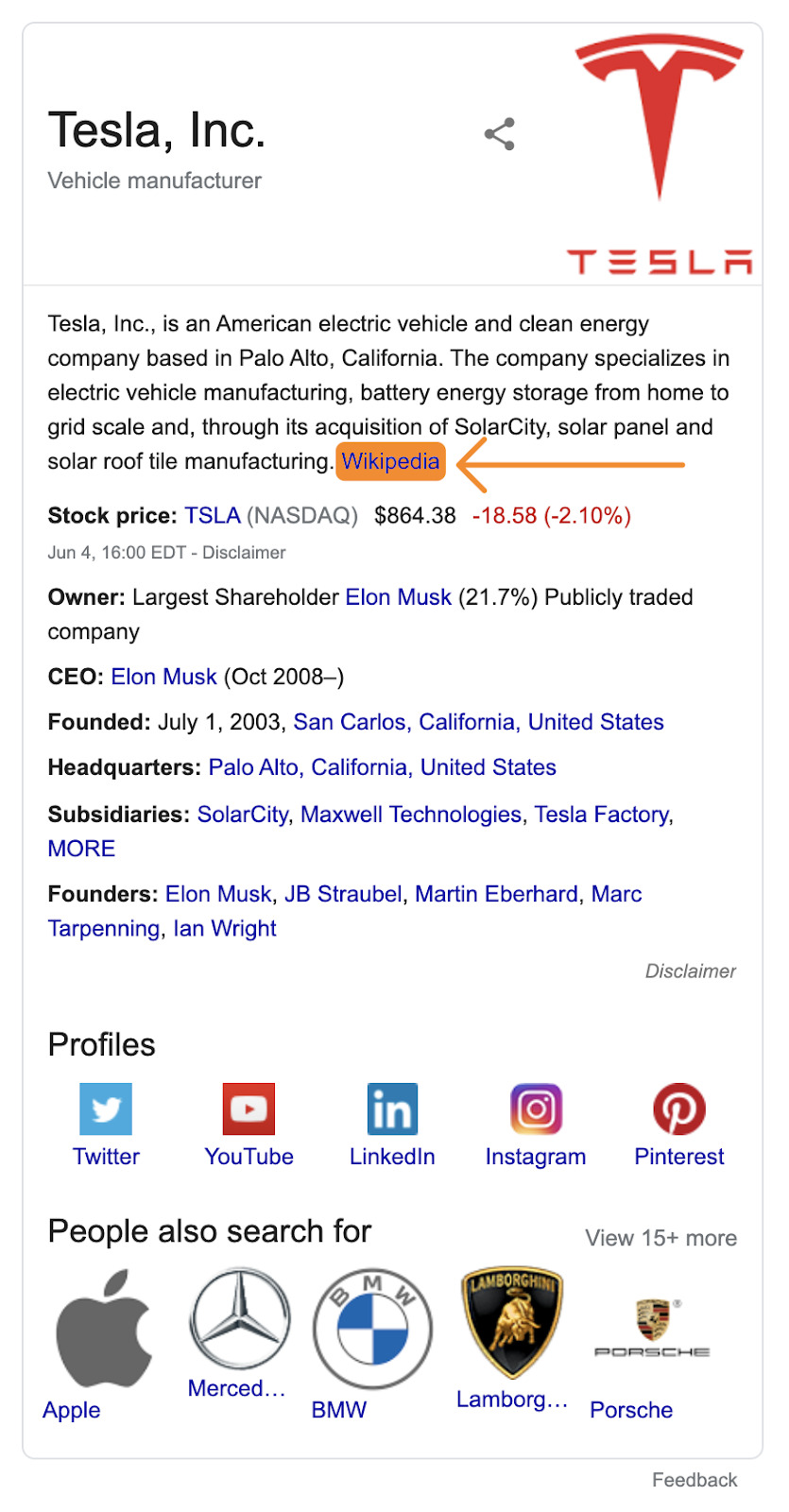
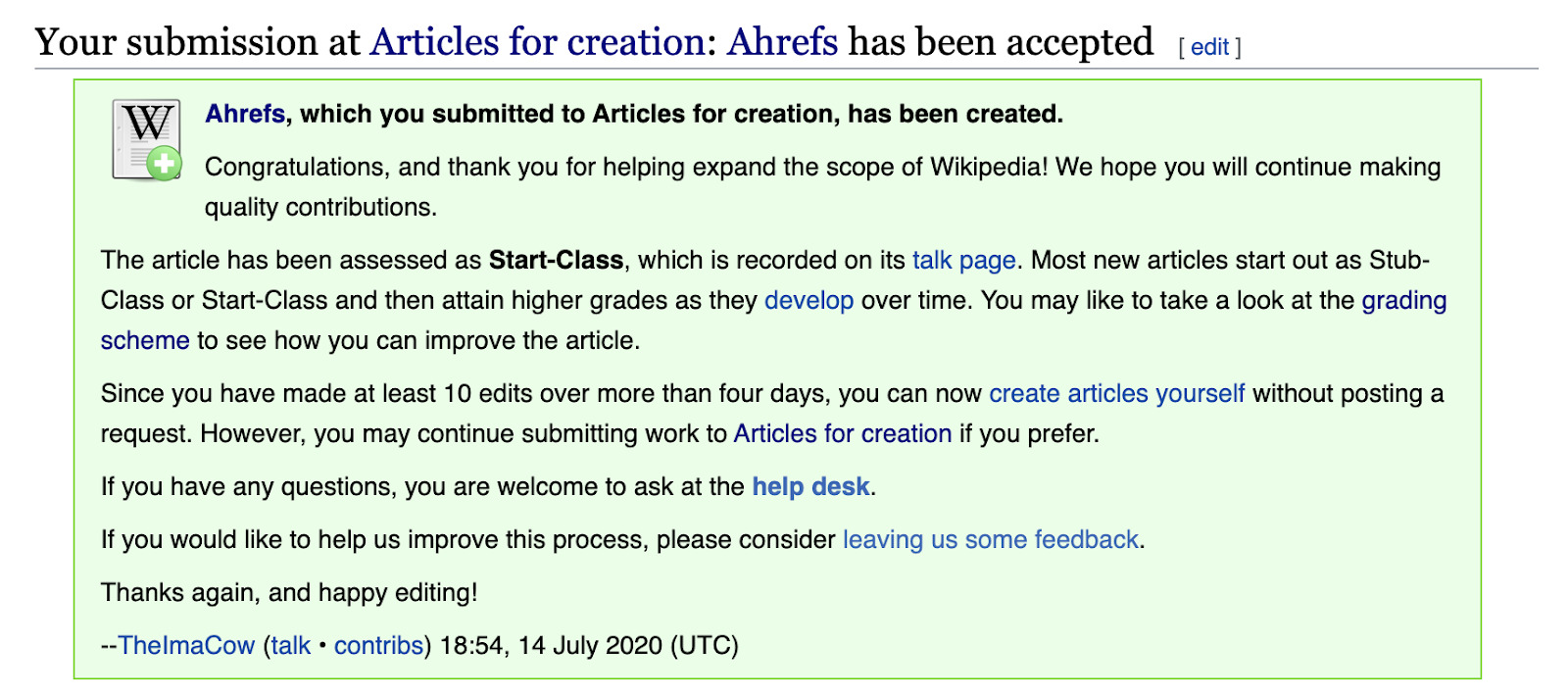

1. Check your notability
(if you use multiple, tick the one you use most)— Rand Fishkin (@randfish) December 17, 2019
What notability means for Wikipedia

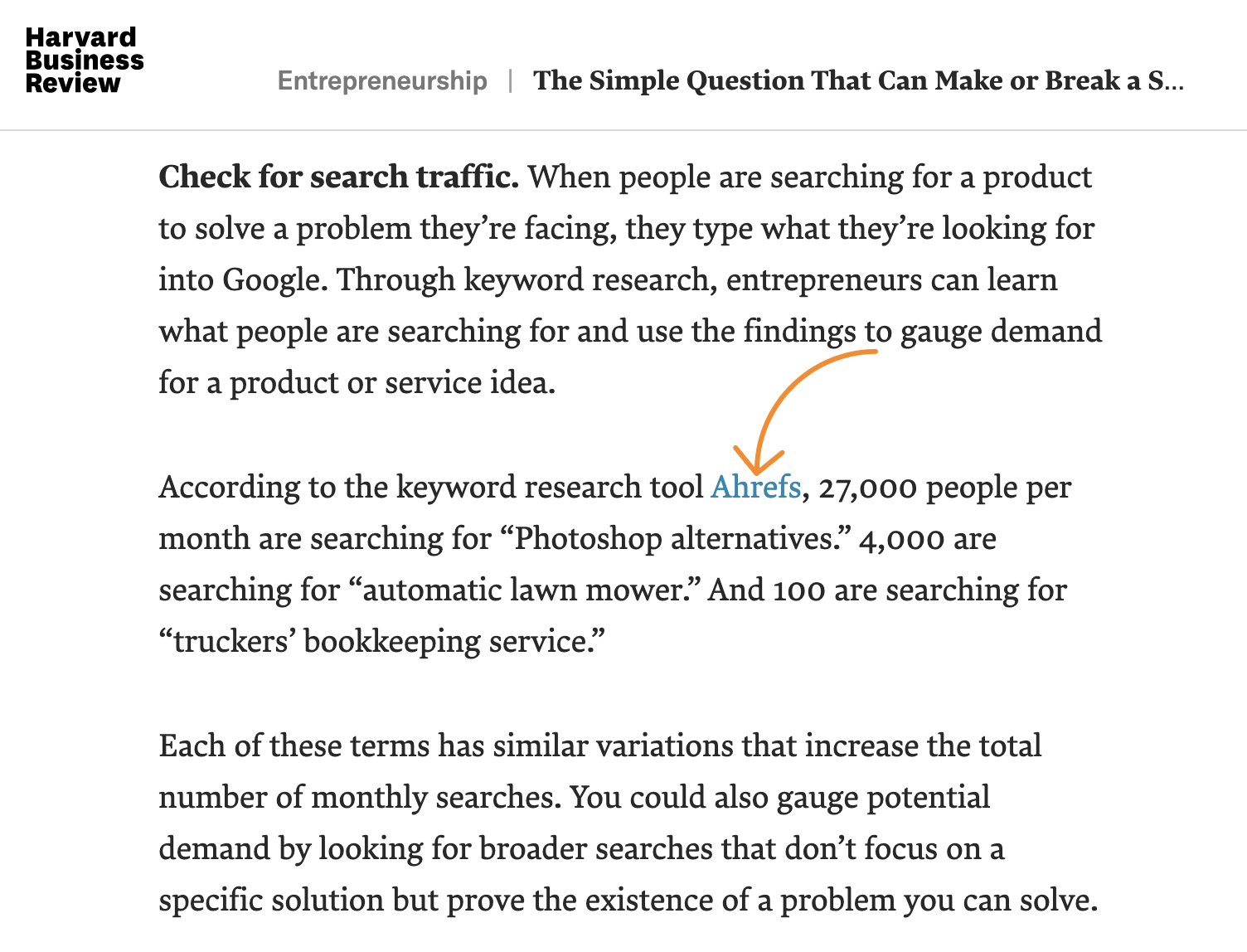
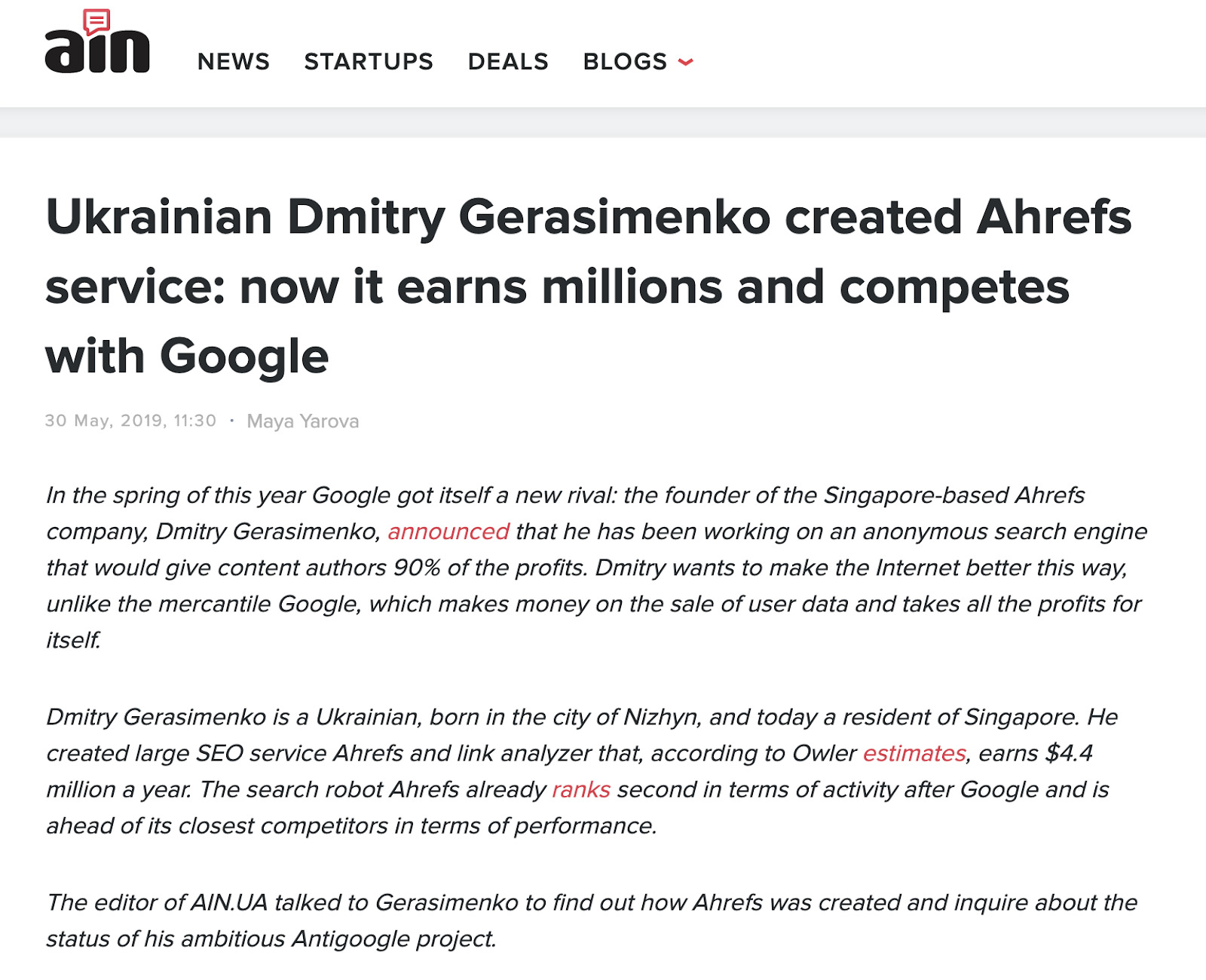
How to quickly estimate notability
1. Your company isn't 'run-of-the-mill'

2. You have significant coverage in reliable and independent sources
3. The entity has 'red links' scattered throughout Wikipedia

site:wikipedia.org with your brand name in quotation marks. Google will retrieve all Wikipedia pages that contain the mention of your brand.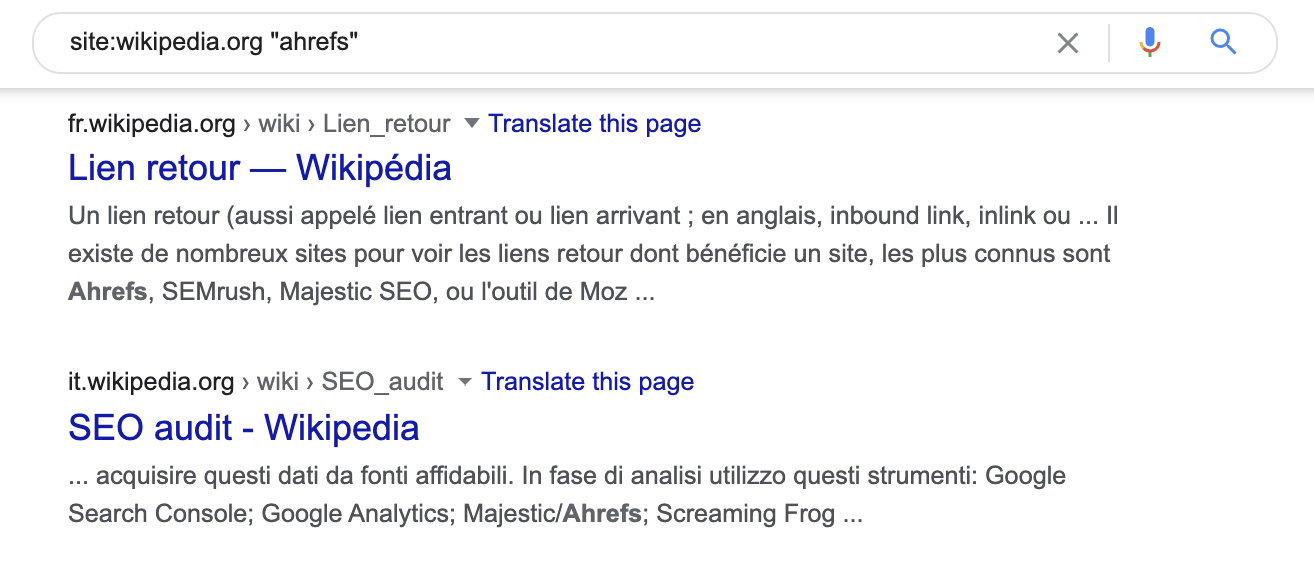
2. Find sources to establish notability
A. Check your referring domains for non-trivial coverage

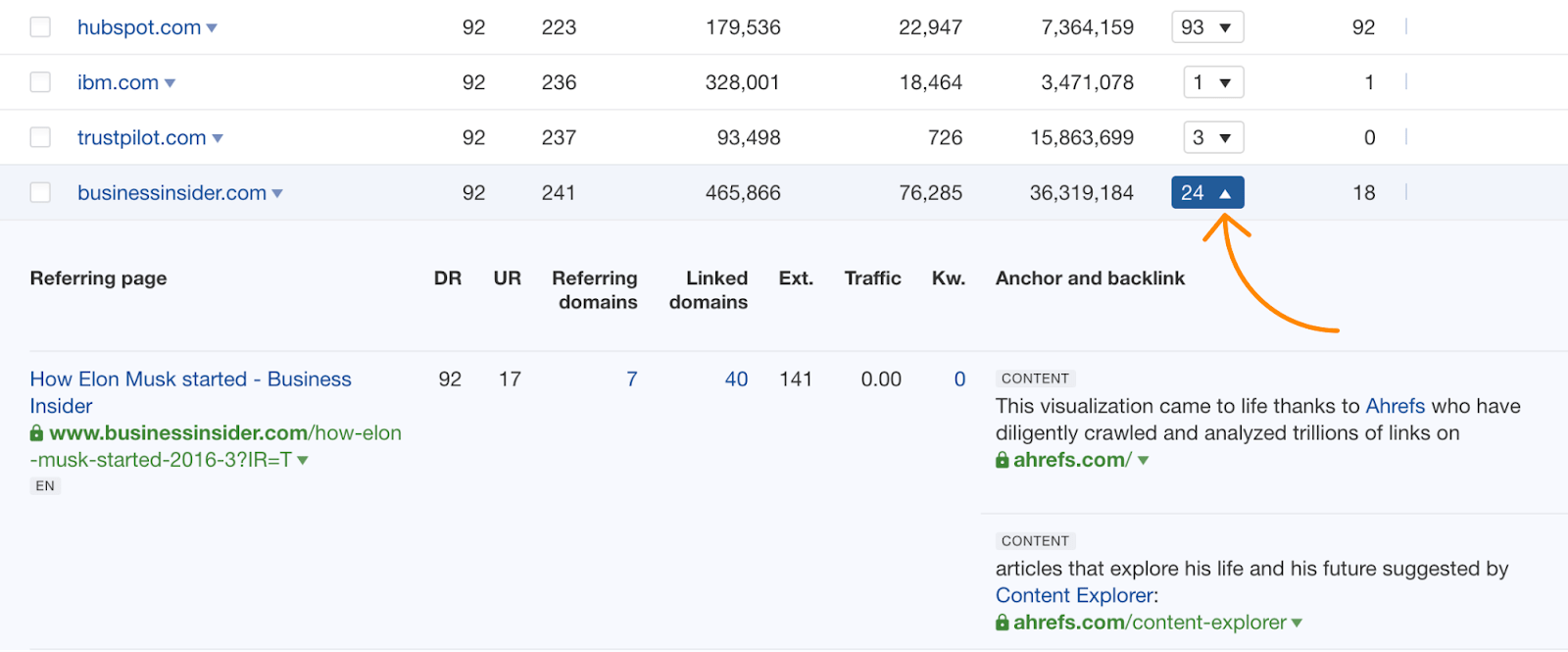

B. Dig into books and journals
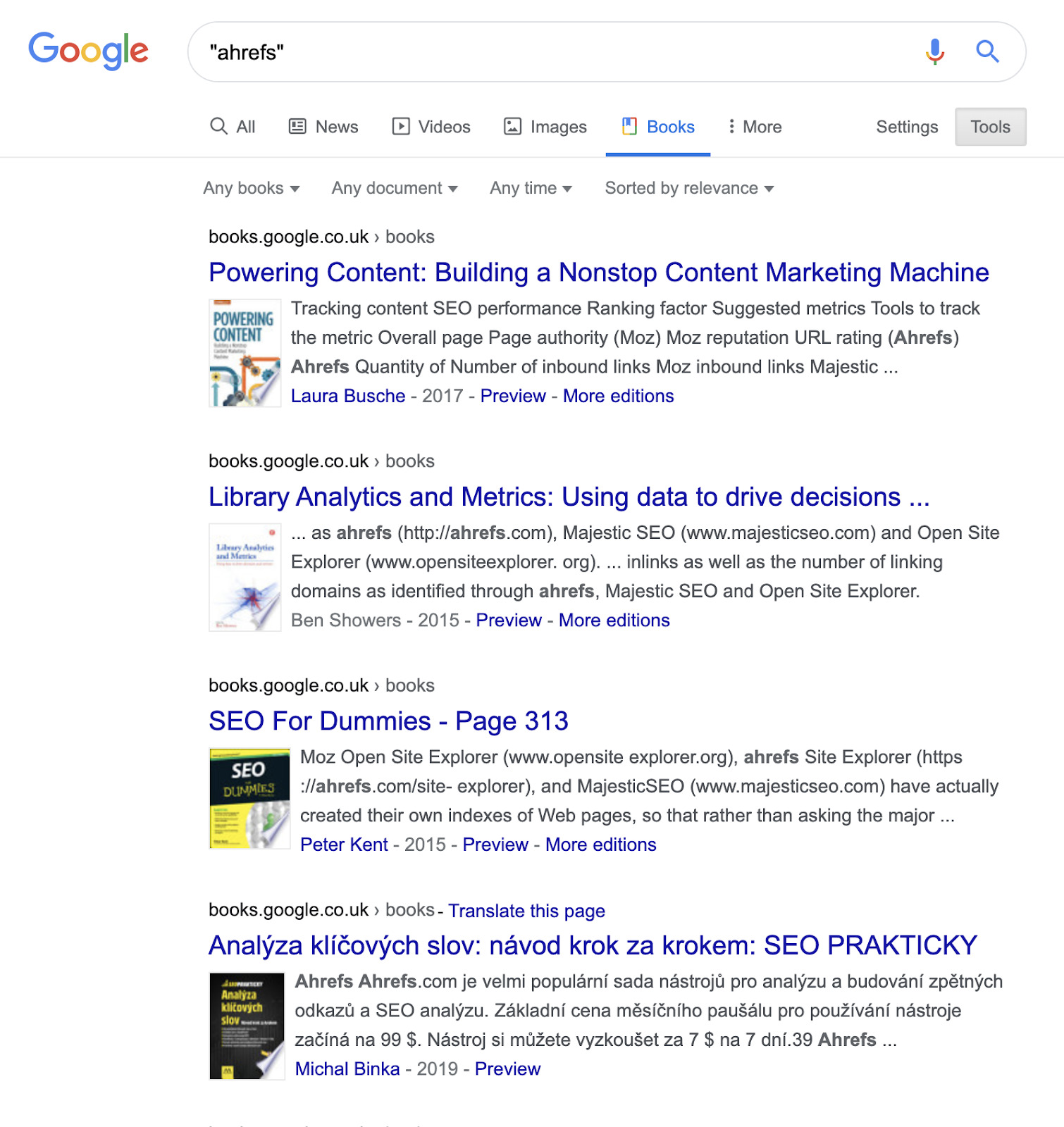
C. Check brand mentions in search of unlinked coverage

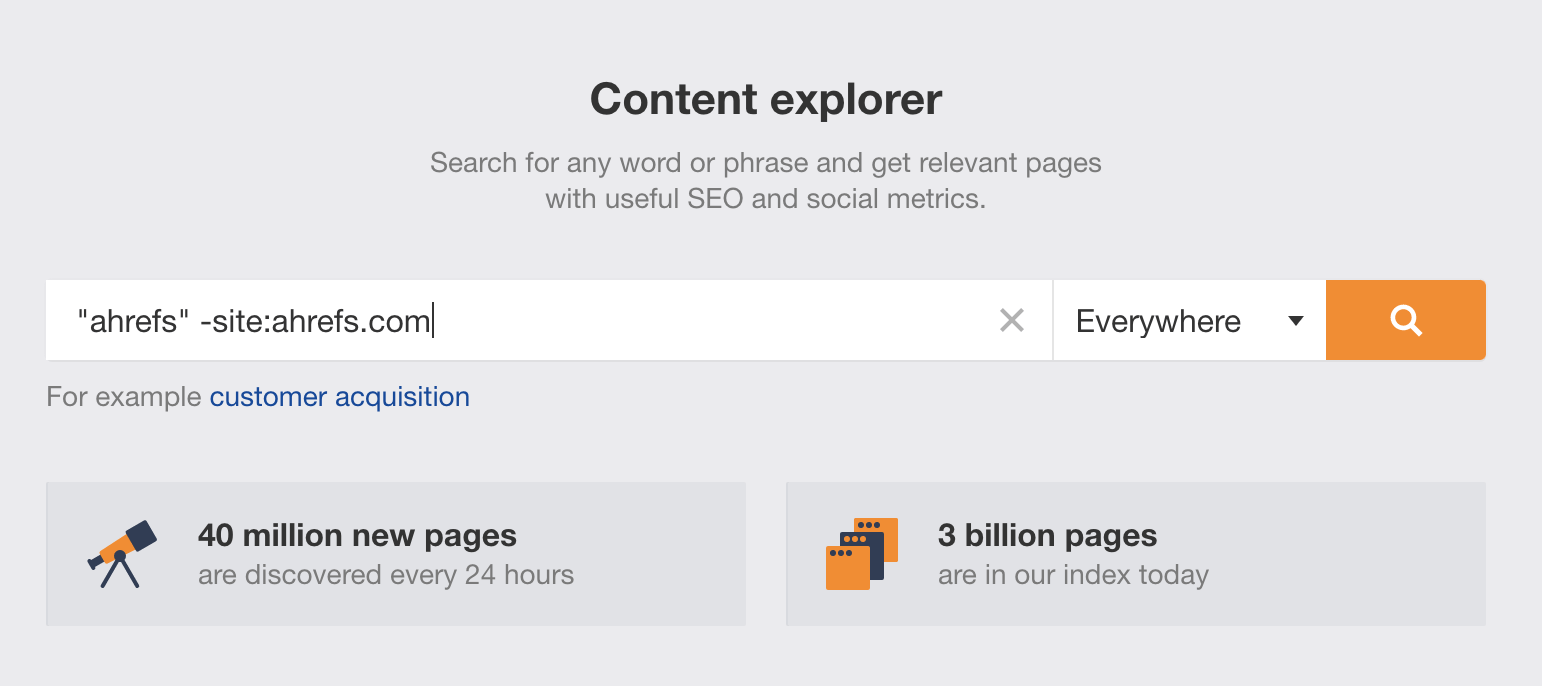
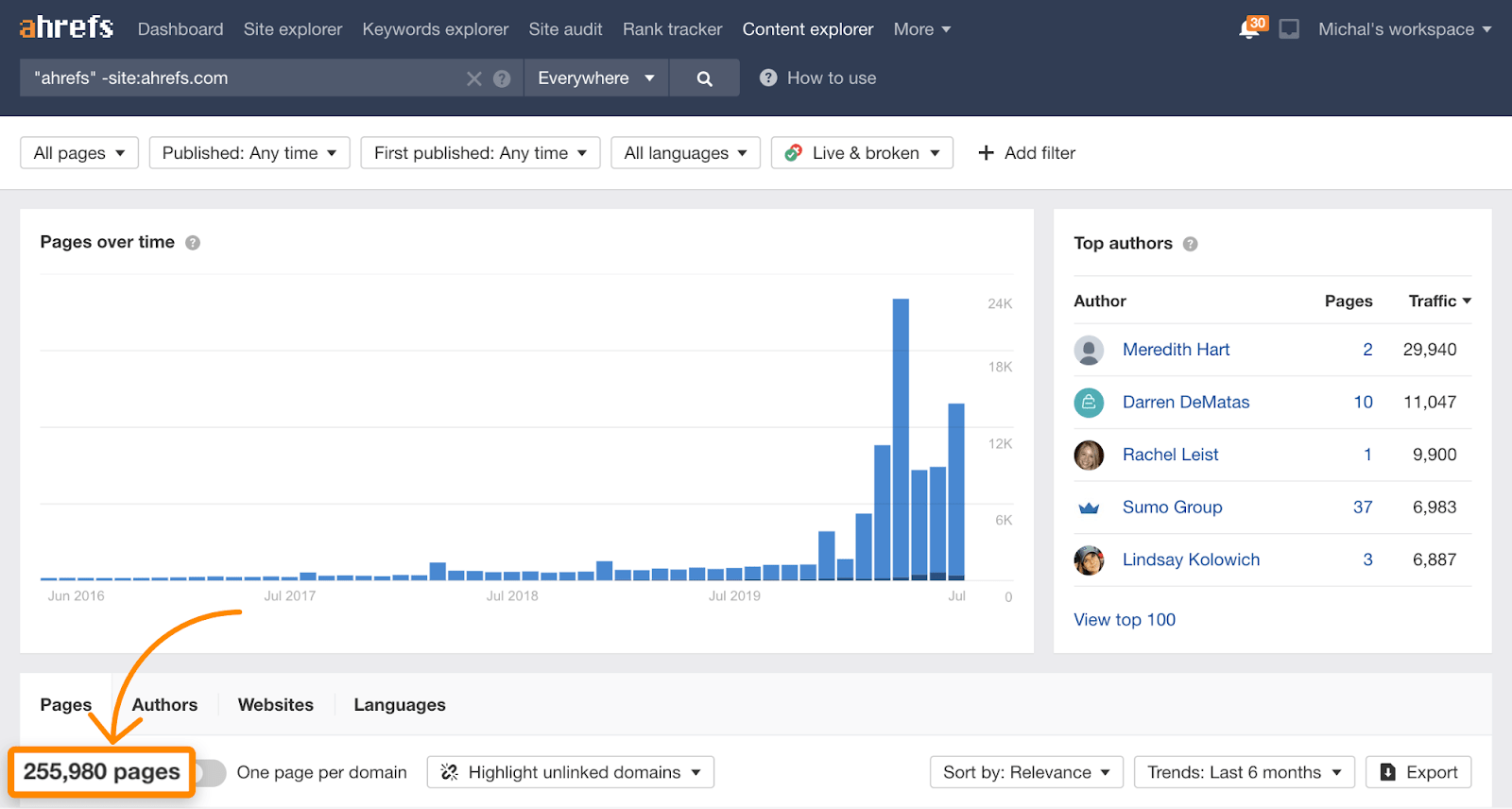

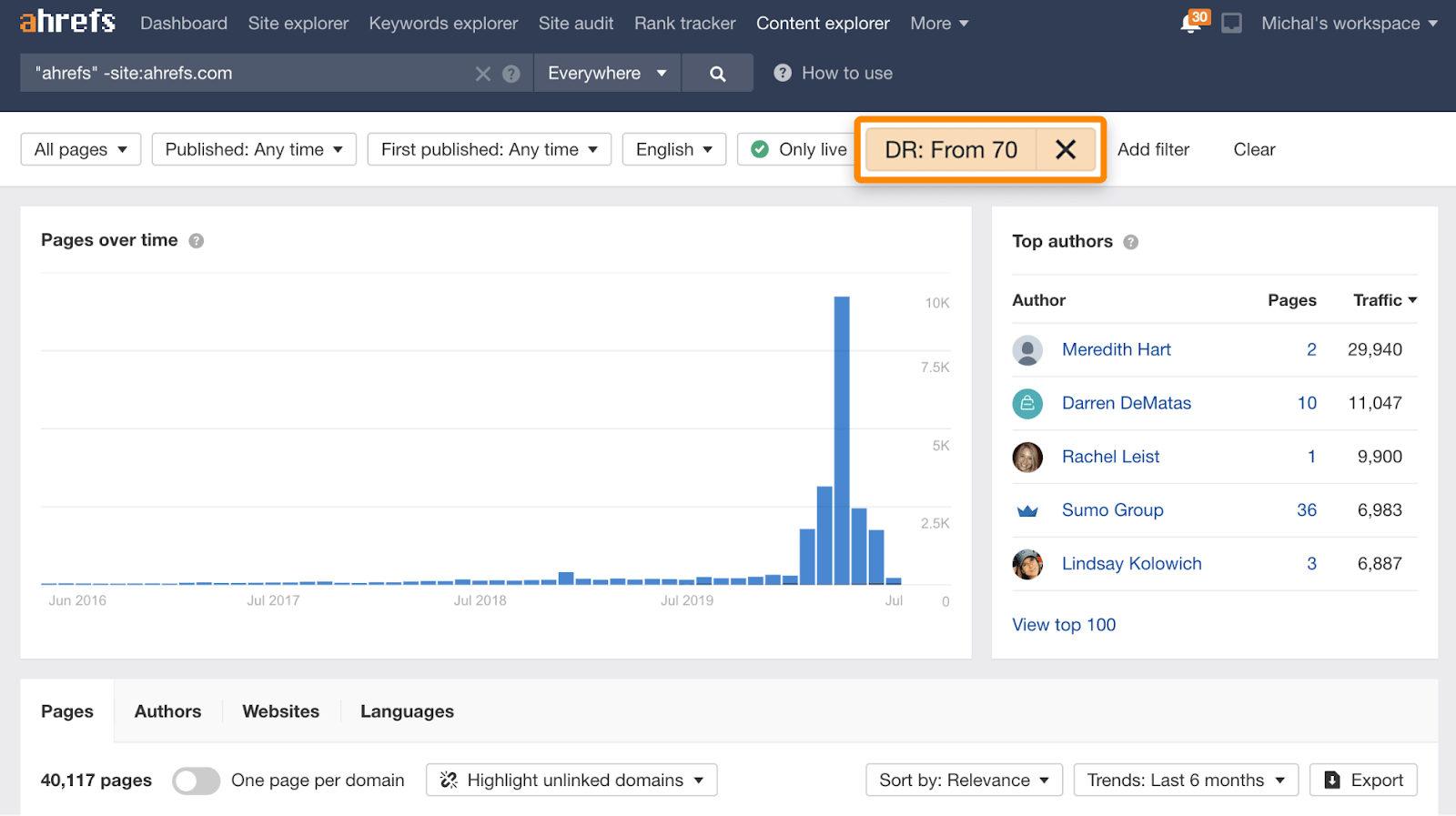
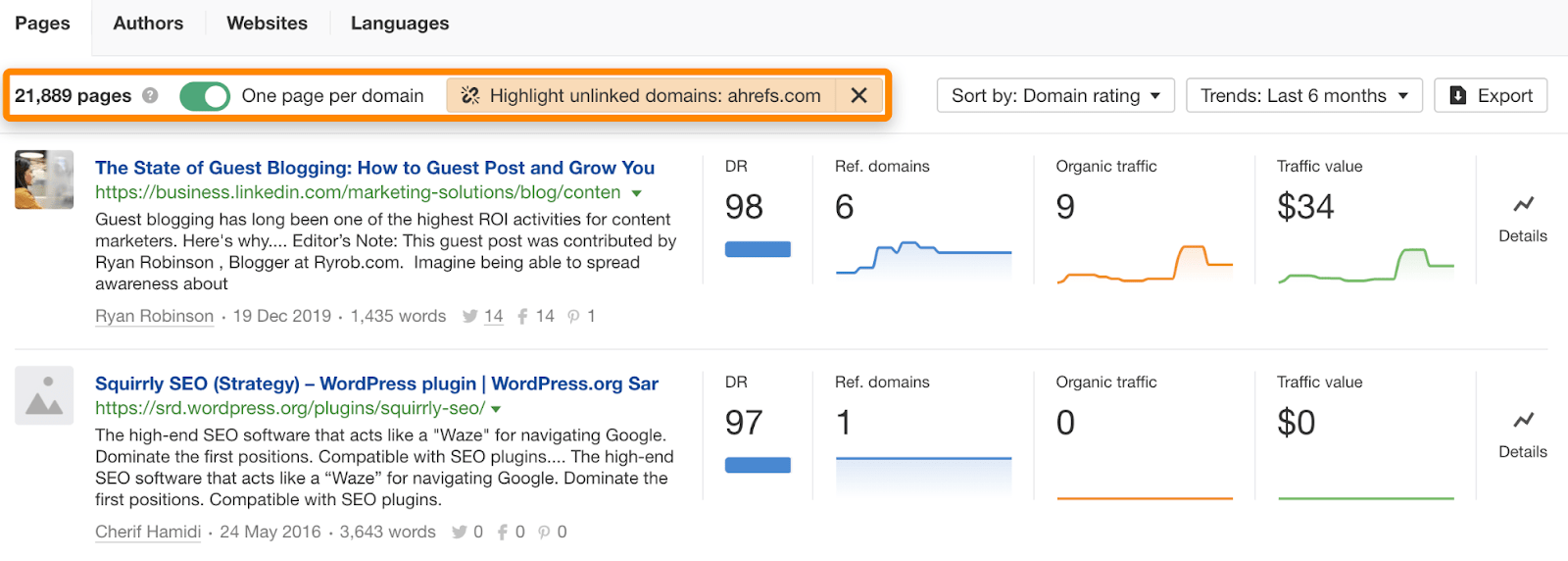

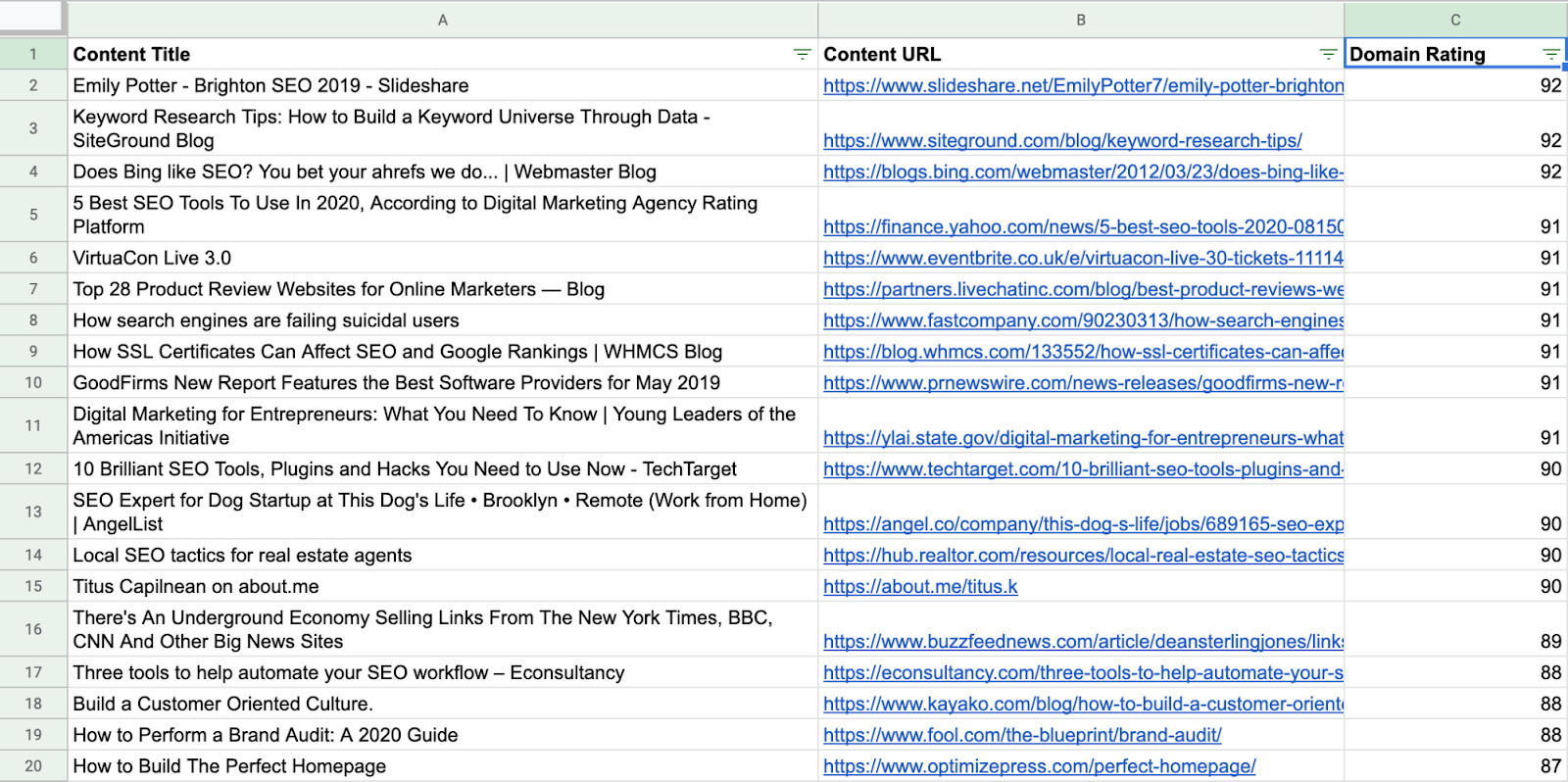
What to do if you don't meet the English Wikipedia notability guidelines
1. Step up your PR game
2. Try Wikipedia in other languages
3. Create a user page
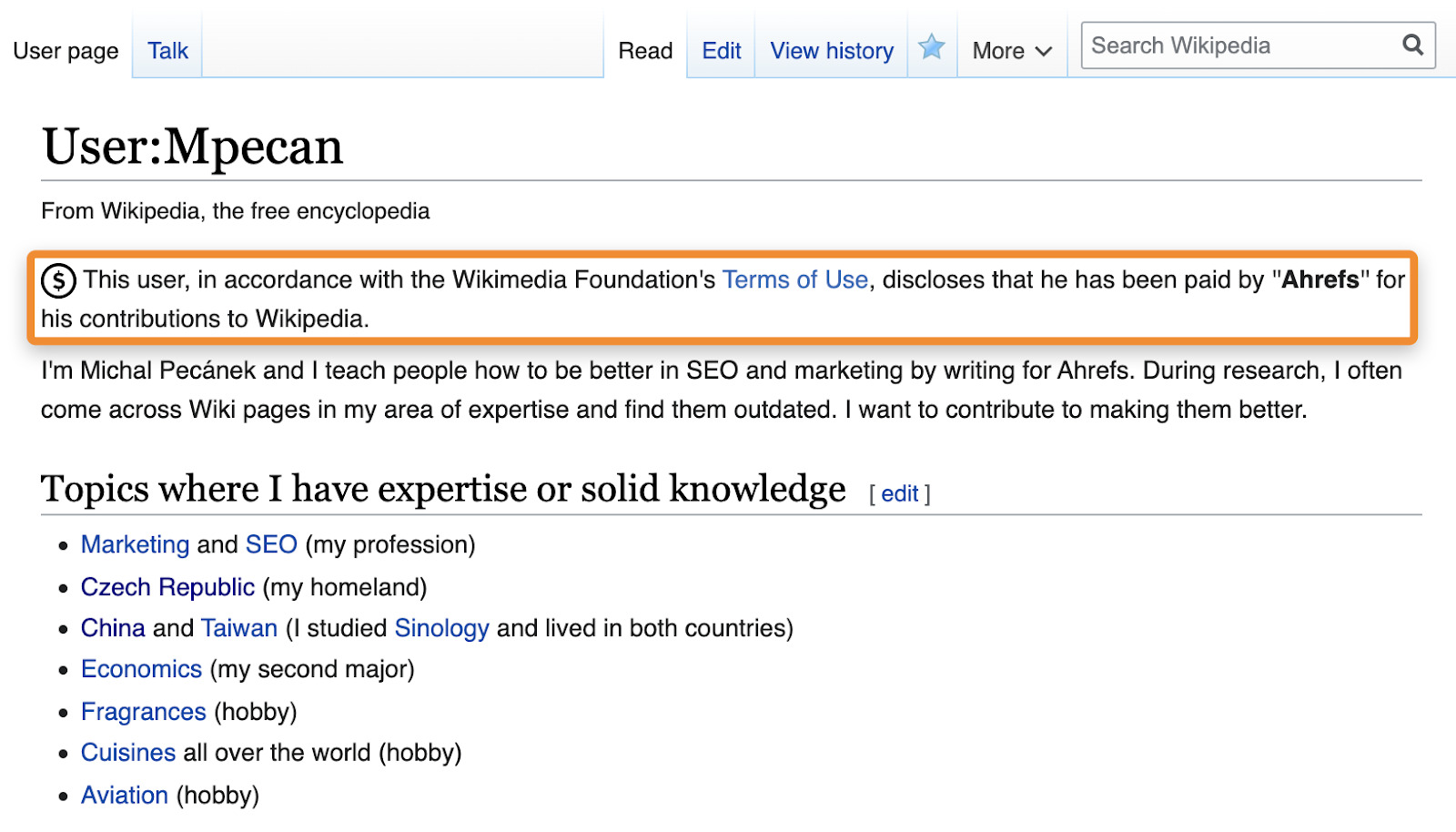
4. Build your reputation
5. Create an outline
6. Draft your page

7. Format, cite, and categorize
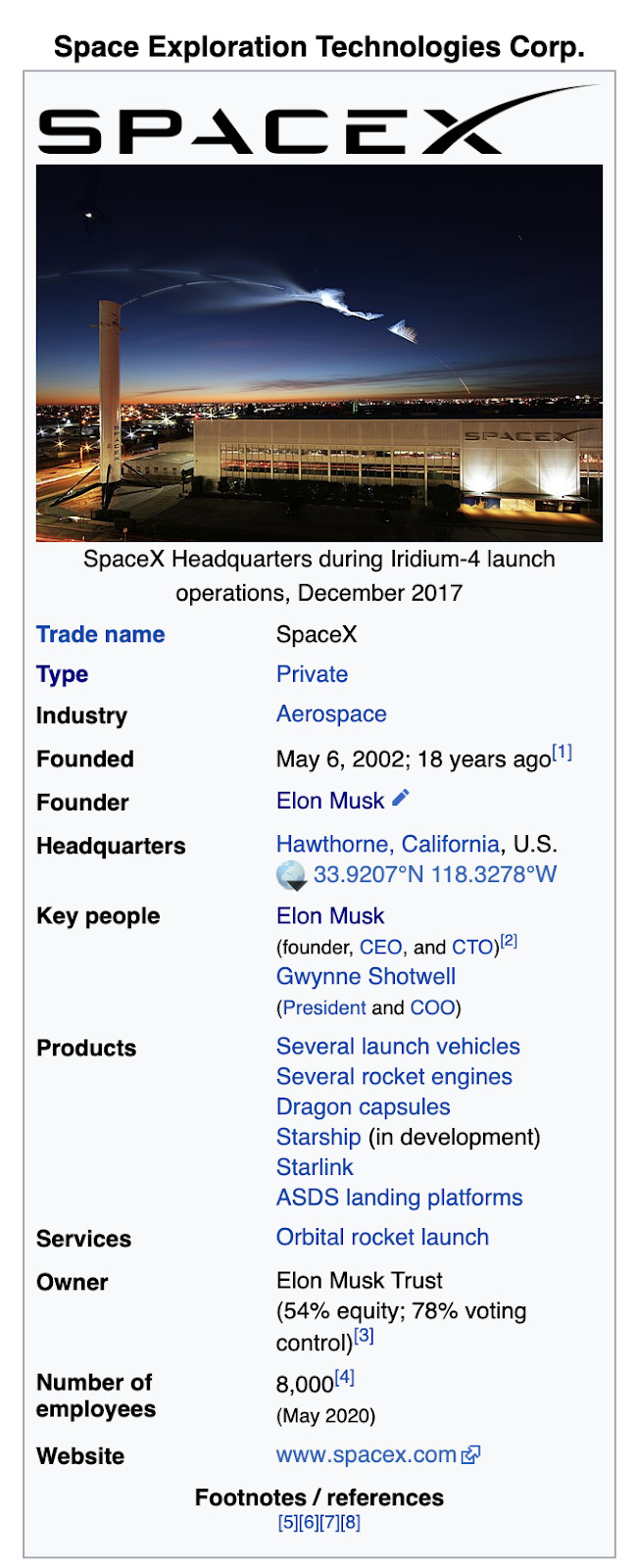
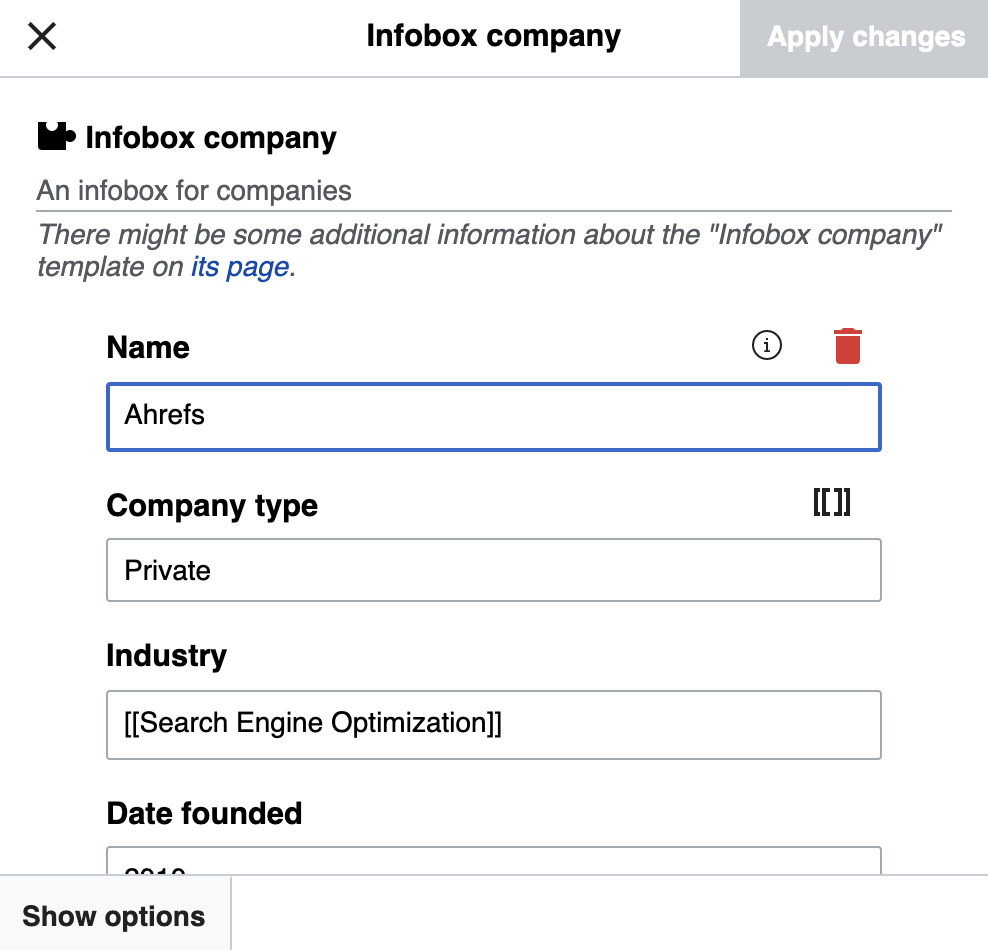
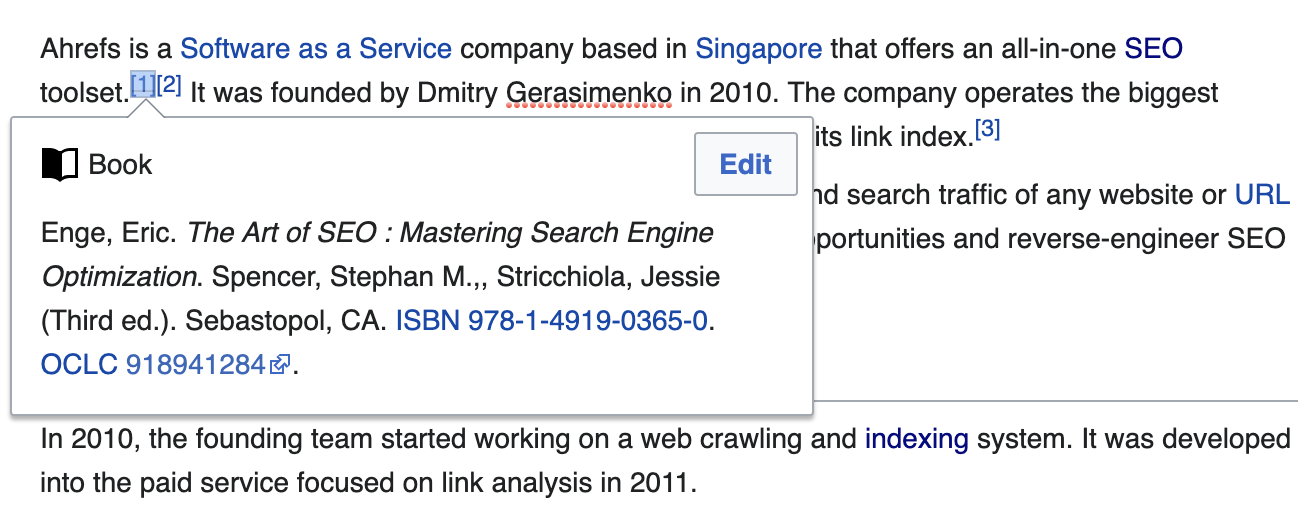
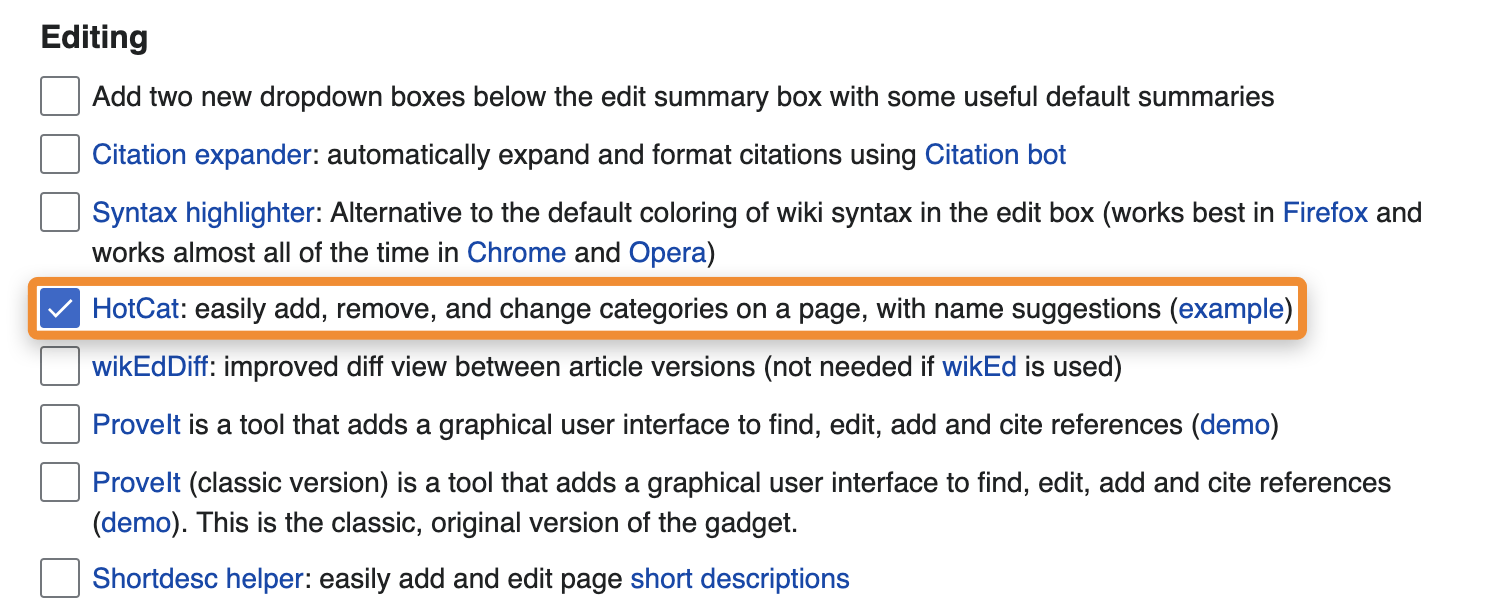
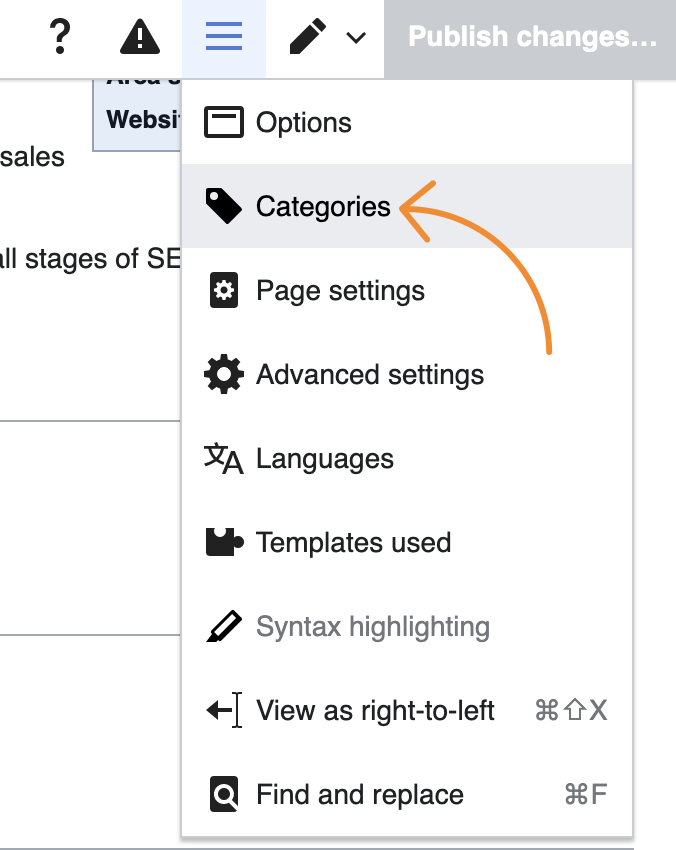

8. Prepare to submit for review


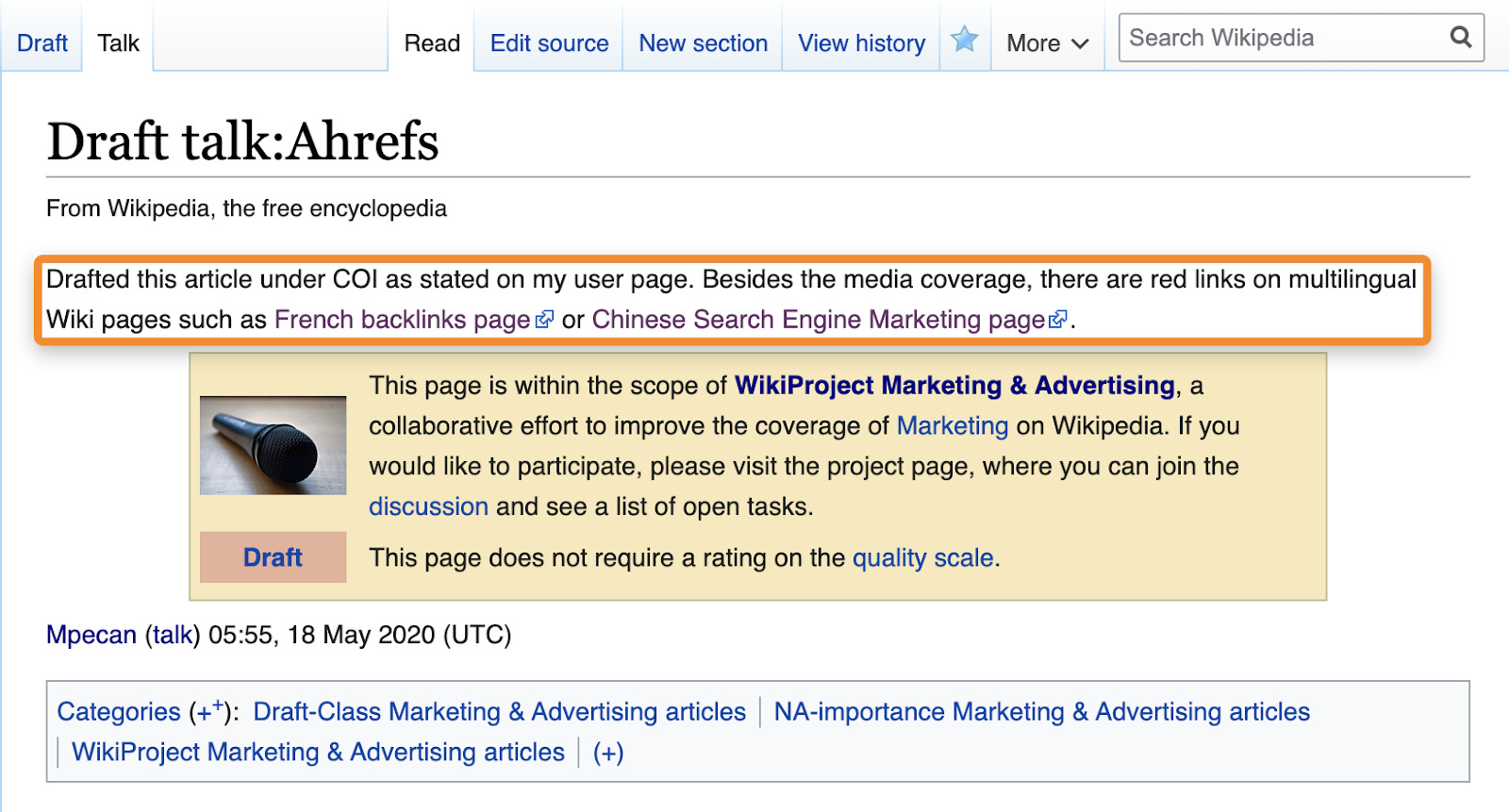
9. Adjust and cooperate



10. Monitor your entries
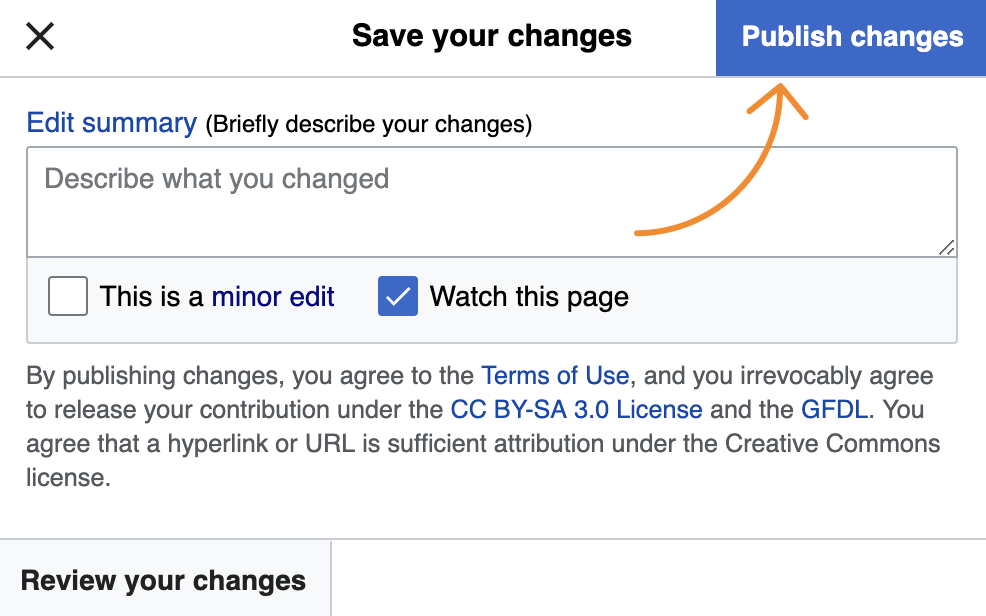
Final thoughts
How To Create A Wiki Page For A Person
Source: https://ahrefs.com/blog/how-to-create-a-wikipedia-page/
Posted by: upchurchsucken.blogspot.com

0 Response to "How To Create A Wiki Page For A Person"
Post a Comment